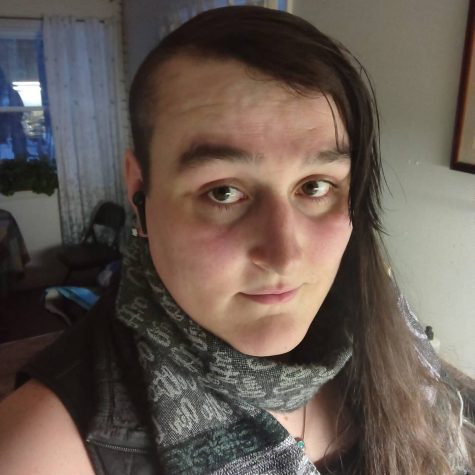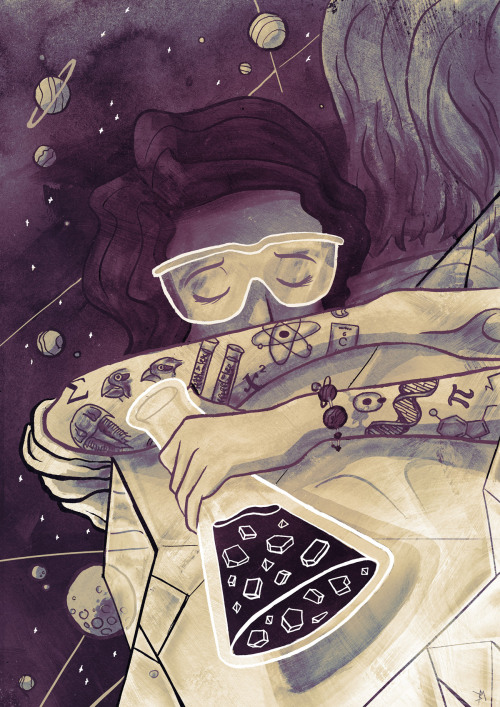Punk Science talks DNA
Welcome back my fellow punk scientists!
Have you ever wondered what it would be like if you could change your body to give yourself a different hair type or eye color? Maybe you’ve even thought about what it would be like to have a world that was disease free, the human body becoming resilient to all forms of sickness.
Such ideas may sound like science fiction and are often represented as potential futures rather than reality. What if that wasn’t necessarily the case anymore?
This is where the field of genetics comes in, and specifically, the processes that humans have been developing in order to shape and mould our biological coding.
In 1950, the double helix shape of DNA was discovered. This was a major discovery because it allowed us to begin to look at the building blocks that make us what we are.
Since that first discovery, science has been seeking means of remedying, or in some cases, preventing failures in that code. Whether from genetic damage at birth or from external sources like sunlight and radiation, DNA is susceptible to changes in its structure, which can have dire consequences for the person in question.
Take, for example, cancer. Cancer is a mutation of the cells in a person’s body that causes them to grow rapidly and eventually form into structures that are called tumors. Such growths can appear in many areas of the body, and many of them are eventually fatal.
This is where the science of genetics comes in, and it may lead to potential methods for treating or even curing cancer. The tool that scientists are studying is called Clustered Regularly Interspaced Short Palindromic Repeat, or CRISPR for short.
This unique strand of DNA was first found in Japan in the 1980s by scientists who were studying E. coli, a family of bacteria that is usually found in the lower intestines of warm-blooded organisms.
One strain in particular can cause sickness in people, and as a result, the bacterial family has come under a lot of scrutiny. What these scientists found while they were studying E. coli was that there was a small, repeating pattern that they couldn’t immediately explain.
Eventually, it came to light that this piece of repeating code might be a method for bacteria to defend themselves, specifically from their archnemesis, viruses. Bacteria and viruses have been at war for as long as they have existed, and this has caused bacteria to come up with ways to protect themselves from being eradicated by an invading virus.
This section of repeating DNA that has become known as CRISPR works by taking bits of viral DNA that are present after an attack, and it uses this DNA as a sort of wanted poster, so that the bacteria will be able to recognise the rogue DNA and therefore defend itself better.
The reason this has major implications is that it works directly inside of a cell’s DNA, effectively taking a little microbial scalpel, cutting out mutated sections of DNA and allowing them to be repaired, or better yet, filled with a beneficial strand.
In 2013, science took another step closer to genetic engineering with a tool called CRISPR-Cas9. This brand of CRISPR follows the steps above to remove and then replace sections of DNA with an enzyme called Cas9, hence the name change.
How scientists plan to use this novel tool is up for serious debate, however, as the ethics of editing human genetic code are currently unclear.
One such study in 2018 involved Chinese scientists using CRISPR to edit the DNA of human embryos to make them more resistant to HIV. The problem was, the scientists weren’t sure what else the editing might have done, and the consequences could be far reaching.
This study was widely condemned by the scientific community as unethical and potentially dangerous to the twin girls that were the world’s first genetically altered babies.
Still, the potential for CRISPR to be used beneficially is present. There is ongoing research into using the tool to root out genetic defects and even possibly serve as a means of treating cancer.
Who knows? Maybe scientists in the future will even be able to make genetic edits on people for reasons other than health. The possibilities of such procedures are on the horizon and may come to fruition if they can be done in a safe and ethical manner.
That’s all the science for this week, so keep your eyes peeled for the next instalment of Punk Science, where we’ll be looking at yet another fascinating area of science and technology. Until next time, farewell from Punk Science, where we’re making science cool again!

Senior, BFA Creative Writing major from Craftsbury, VT.
Resident Punk Scientist and Basement Medicine Web Wrangler.
I love science and writing, and...




